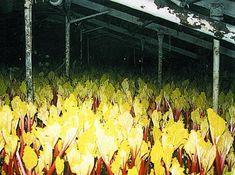
Forced rhubarb yields in the UK are running at only about half of last year’s volumes, as weather factors over the last two years combined to cause one of the most difficult seasons in recent times.
Two-year old roots are used for forcing rhubarb and these suffered in the hot summer of 2003. The late autumn and early winter this season was not cool enough for the plants, which are native to Siberia,. “These two factors have compounded to give us a late start and a yield of about 50 per cent of last year,” said Wakefield grower Janet Oldroyd-Hume.
Timperley Early is now on stream, but growers who did not have this variety or whose volumes were hindered because of weather factors, have only just started harvesting this week, about a month behind a normal start.
“We will lose money on the forced crop this year,” said Oldroyd-Hume. “It doesn’t matter how good the quality is if the yield is not there. It has been two years work for a five week season and only half a crop.”
Pricing on wholesale markets has been strong for growers with Timperley Early over the last two weeks, but Dutch product has now come on stream and has begun to “upset the bandwagon” said Oldroyd-Hume, and prices have started to come down. Supermarket prices do not reflect the short availability or difficult growing conditions and are still in line with last year. “Up until this week, we have been making 25p a lb more on the wholesale markets than last year, and we really need wholesalers to hold onto better prices for British growers,” she said.
Oldroyd-Hume and the other 11 forced rhubarb growers that are left in the traditional Wakefield Triangle, are applying for denomination of origin status for their product. Their application is with Defra before being passed to the EU authorities. If successful it will put them on a stronger footing and give Yorkshire growers a point of difference.
Supermarket suppliers report that demand for the UK product is far outstripping supply and that Dutch rhubarb is helping by supplementing volumes.
The outdoor crop is due to be on-stream in late March although this could yet be delayed as another cold snap struck this week. There is therefore likely to be some overlap in forced and outdoor supplies.



